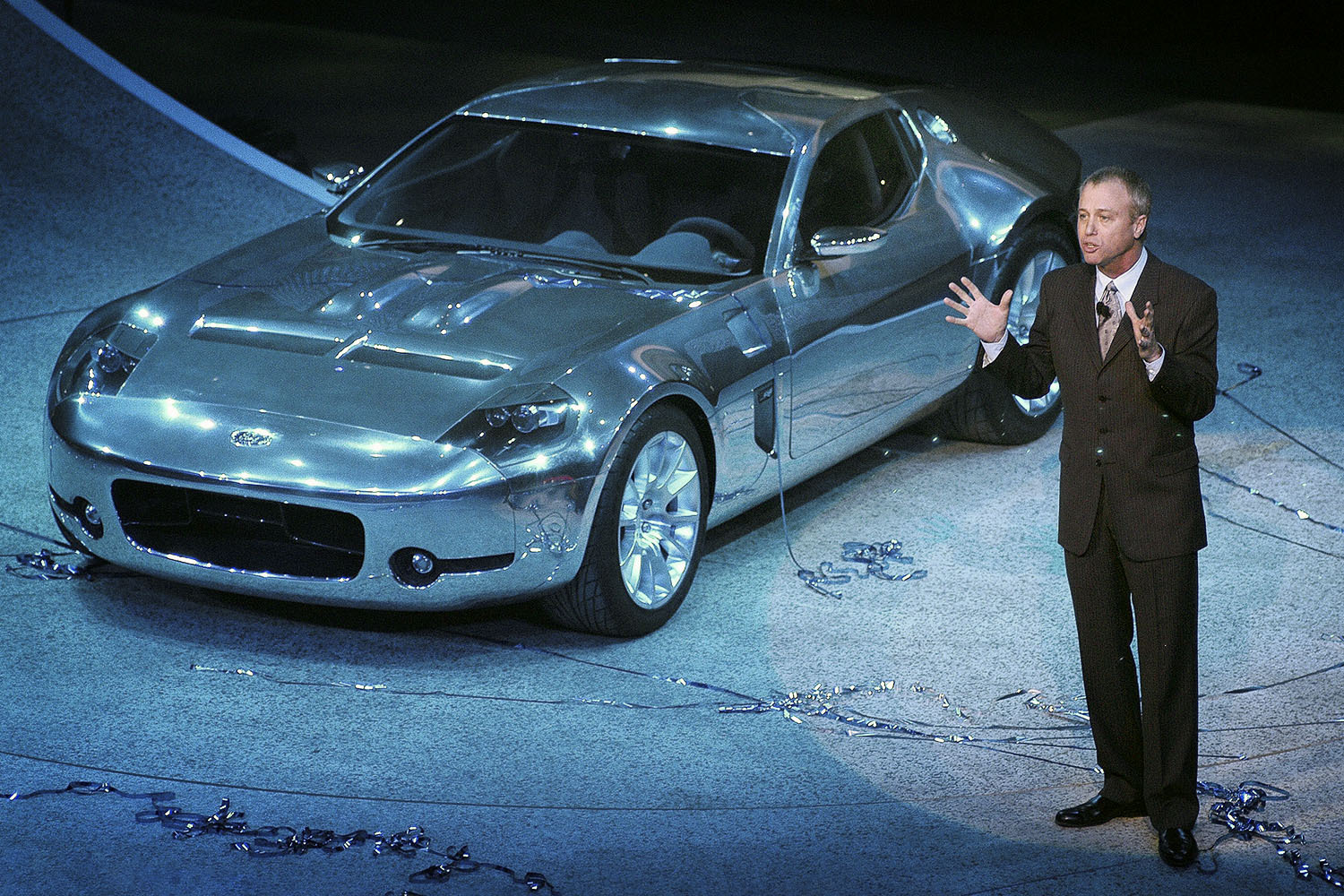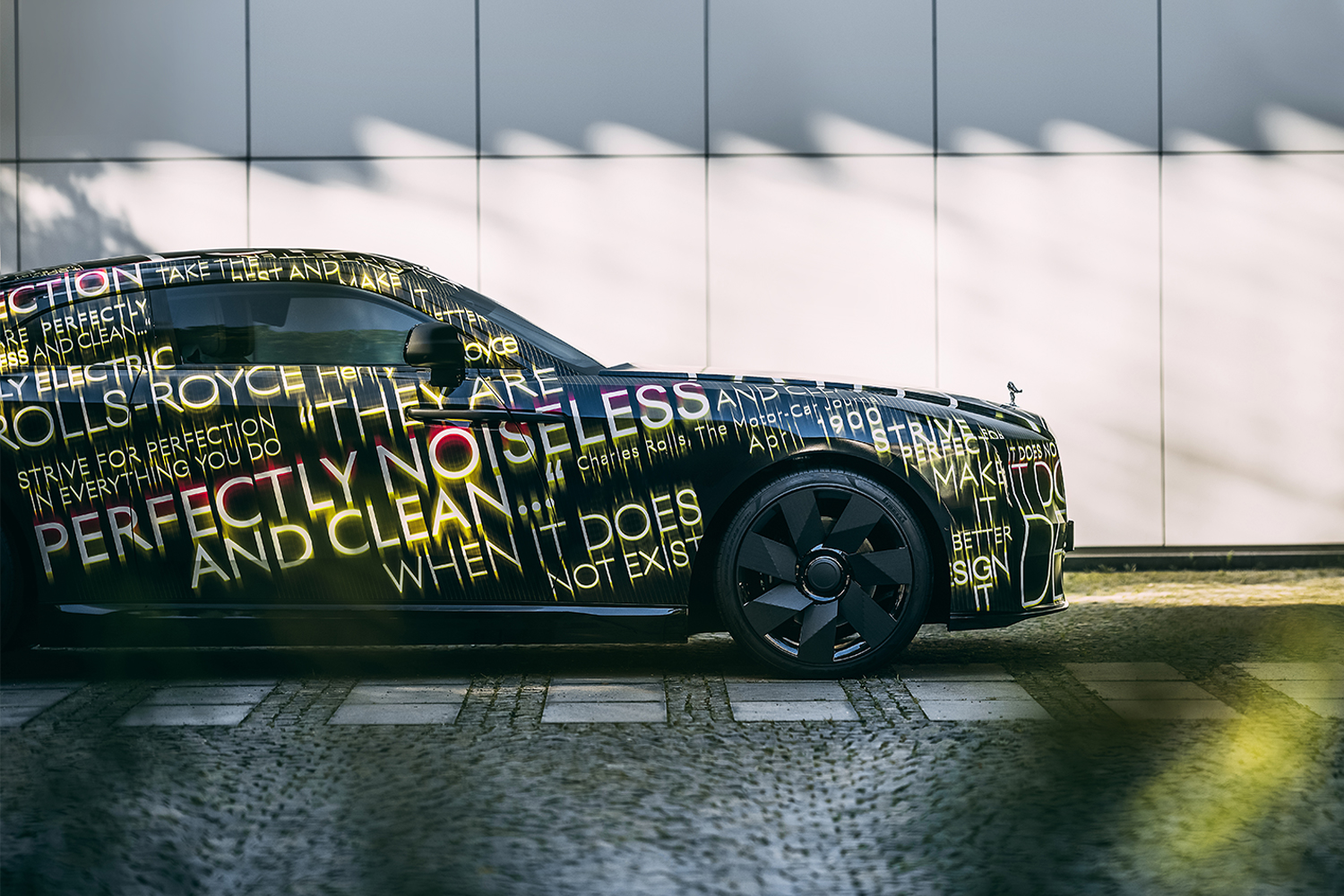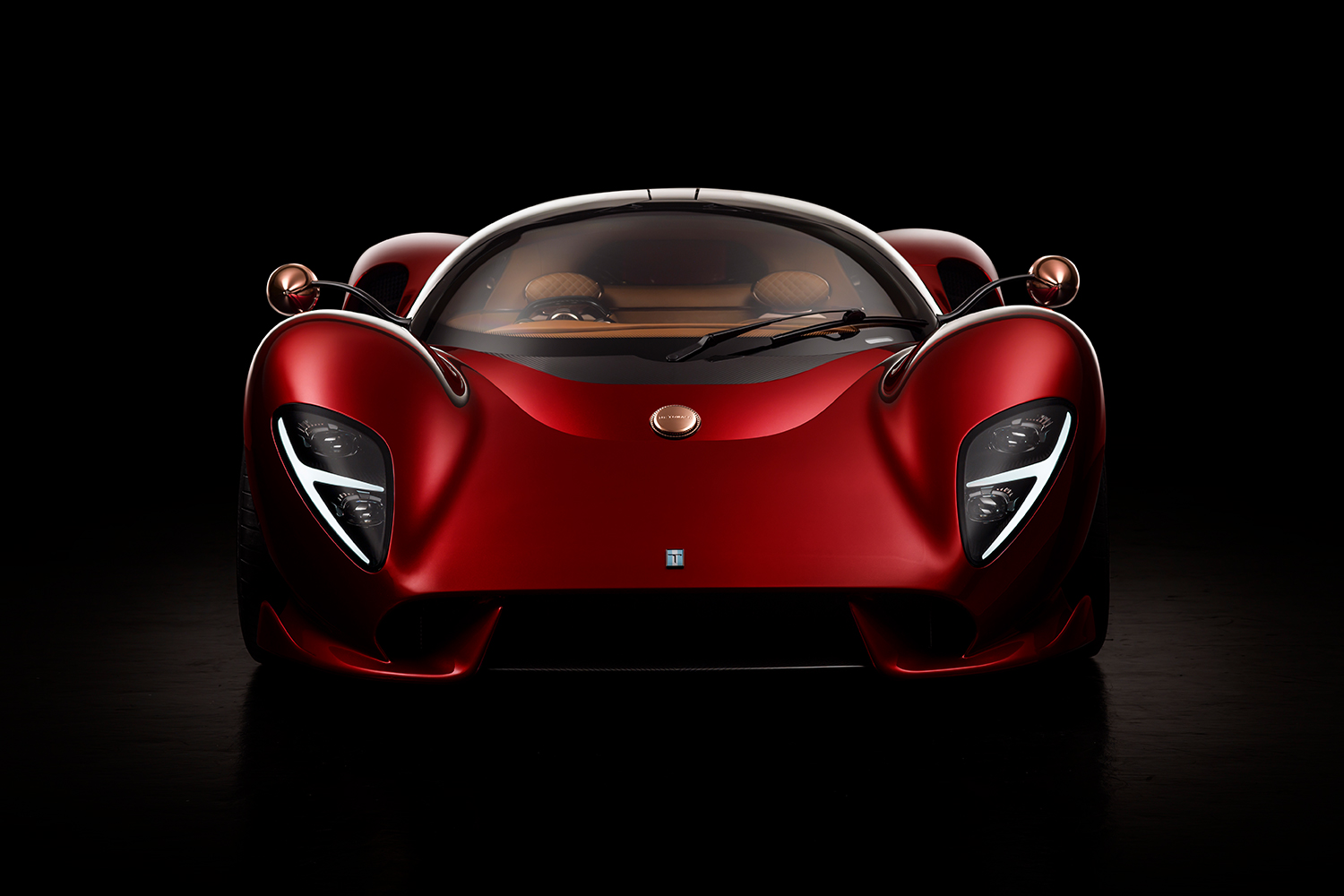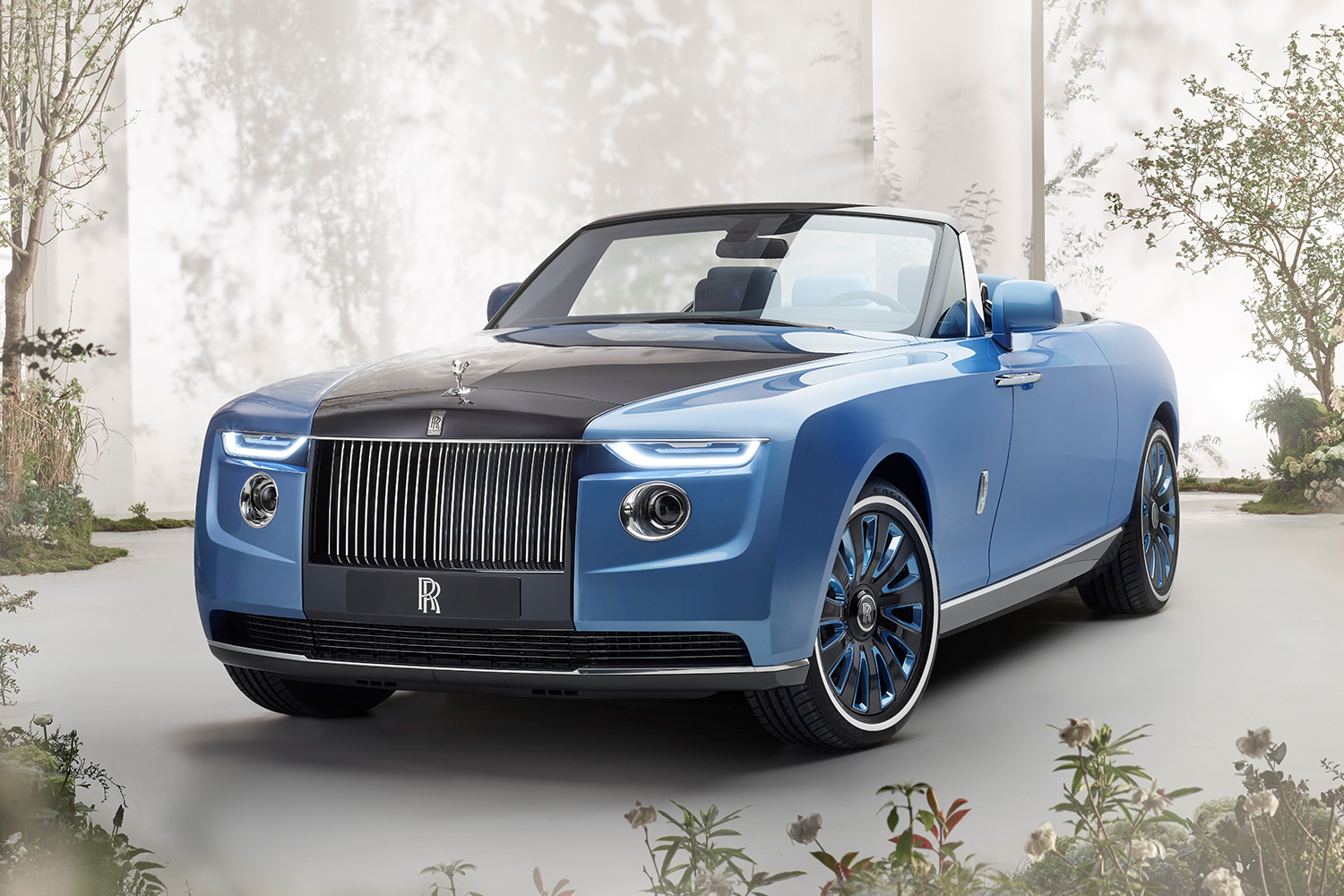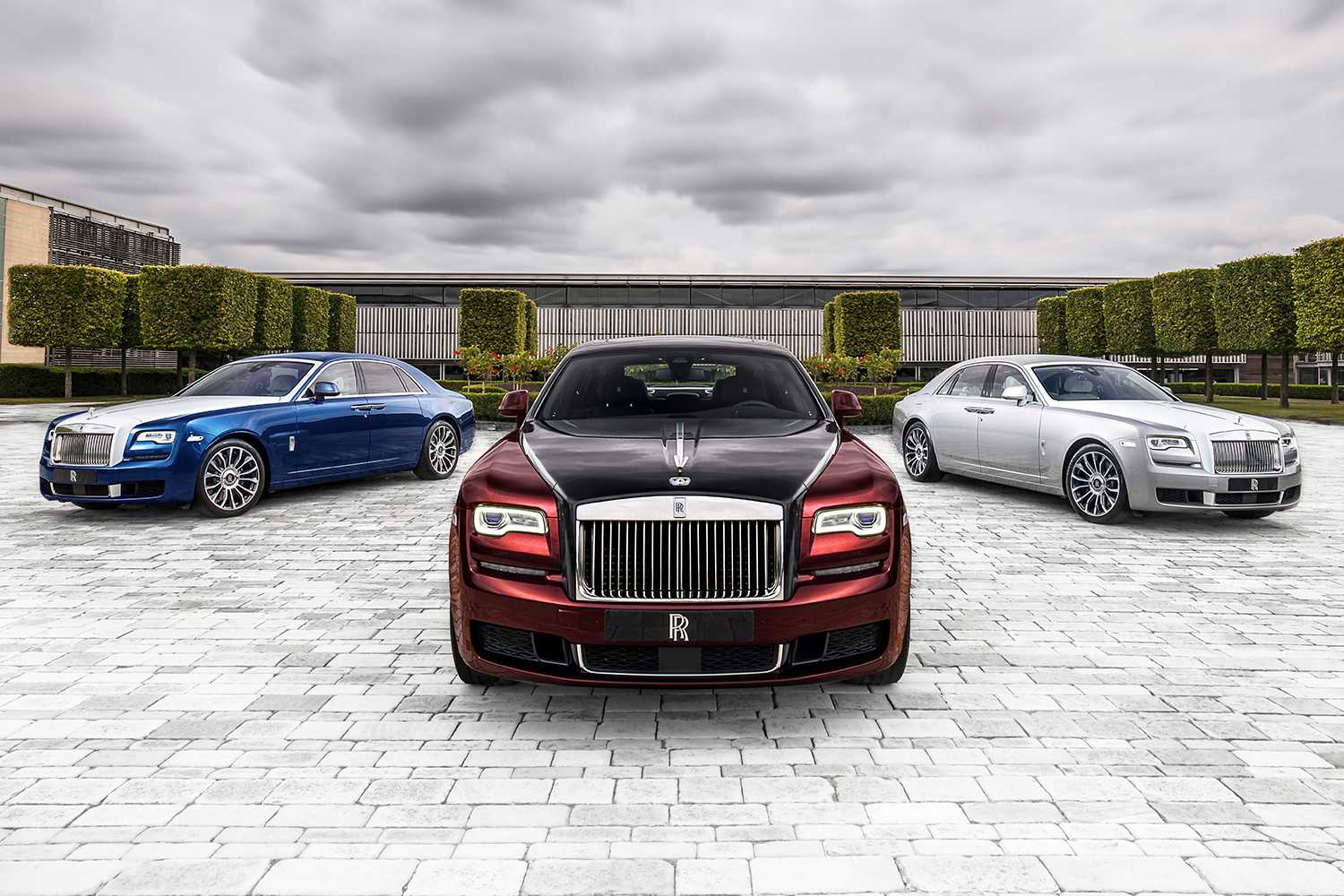“Matching the color of a ceramic to one of a paint is harder than it sounds, because the materials mean they look different to different people’s eyes. And so the number of samples we ended up sending out to Japan for the client to review were just endless,” recalls Michael Bryden. “But the client collected ancient Japanese ceramics and wanted his car to match, and then it all had to tie in with the Hermès scheme in his Bombardier jet.”
If catering to such exacting customer demands was an Olympic sport, Bryden would have stood atop the podium countless times. For the last 10 years he’s been the lead designer of the bespoke department at Rolls-Royce Motor Cars, the esteemed British car maker and, increasingly, fulfiller of wild automotive dreams.
Want your baby girl’s footprints depicted on the piano-white dashboard? No problem. How about having the stars over your home in Vero Beach, Florida, recreated in the headliner? Or your speakers veneered? Or the logo of your own racing team echoed in the color scheme? Or the interior trim done in koa wood, which is only found in Hawaii? Rolls-Royce may have raised eyebrows in describing its 21st century aesthetic as “post-opulent” — less flash, more content — but it’s certainly not yet post-very-particular-indeed. In fact, 2021 saw record demand for the company’s bespoke projects.
“We had one client request that we create an icy atmosphere in their Cullinan,” says Bryden, describing a bespoke version of the brand’s well-received SUV. “Our very skilled artists in the woodshop worked with amazing shades of white, blue-black and this vivid turquoise. Then we developed a special paint with glass particles to create a frost effect. I think the overall effect suited the nature of the car somehow.”

It perhaps goes without saying that the people who indulge in such flights of fancy have plenty of moolah. For some, Bryden says, these are fun projects they can enjoy sinking their teeth into, as they would with their super-yacht or private jet. Some take it more seriously than others. “When you’re on your 16th loop of a project your patience can be tested,” he laughs, “but, more seriously, they’re typically a lot of fun.” Others are car nuts, who can reel off the specs for every new supercar. And for another group of buyers, it’s about creating a piece of automotive history. “Clients want a personal statement, of course, but often see themselves as creating a future classic, as being brand ambassadors in a way,” says Bryden.
Are there client demands so outré that Rolls-Royce would decline to proceed? Bryden treads a diplomatic line. Some requests are rejected on safety grounds; one client wanted a light-colored dashboard top, but the reflectivity issues that arose made it unwise. “And we certainly offer direction — how one color may work better with another, for example. It’s all part of the client’s experience that they have access to that kind of expertise, after all.”
“But we’re not the taste police,” Bryden adds, “and we have to get our heads around what the final home for these special projects will be, and what goes down well in different cultures. It might not be to my taste, or maybe not to your taste, but that’s not the point. We very rarely have to say no to anything. Rather, for first-time clients, there’s a lot of ‘wow, you can do that?’ The real challenges are those clients whom I’ve worked with on a new car every year. We’re always trying to push what you can do with materials and technologies, but it’s hard to keep surprising them as we want to.”

It’s perhaps not surprising that Bryden hesitates to call himself a car designer since his real experience and talent lies in art and interior design. Indeed, he tends to think of his work more as decorating a space, working with a theme in a way that makes it cohere throughout each car’s cabin. Goodwood — the home of Rolls-Royce, near the U.K.’s south coast — is, he notes, unexpectedly replete with world-class textiles experts with backgrounds in fashion but who wouldn’t necessarily know their A-line from their C pillar.
Leave that to his colleague Alex Innes, who runs Rolls-Royce’s coachbuilding operation, which is maybe best described as the ultimate incarnation of bespoke — in which the very form of the bodywork is open to interpretation, too. Rolls-Royce returned to coachbuilding with its Sweptail of 2017, in part consequent to the introduction of a proprietary standalone aluminum architecture with an inherent flexibility that allows the company to play with proportion and scale on a (very) low-volume basis.

Last October, the company unveiled the Boat Tail, which, at a price of some $27 million, became the most expensive car the company has ever produced, and likely the most expensive car period. It played with form like no Rolls-Royce before, deconstructing the brand’s iconic grille, for example, to make it more a part of the body itself, so the color of the bonnet spills over onto those polished surfaces. Only three Boat Tails have been made.
“When you realize what coachbuilding entails, it’s easy to see why it’s so rare — it is, after all, about making a true commission model,” Innes explains. “Five years ago we didn’t know that a car like the Boat Tail would exist, just a collective of owners with a shared appreciation for nautical design. Getting it made was an extraordinary journey. Yet the point is that the result is a truly hand-built motorcar. ‘Hand-built’ is so often overused in the modern world but by ‘hand-built’ I really mean from the ground up, which allowed us to do the kind of things you wouldn’t normally be able to do with more industrialized techniques. It injects the result with meaning in a way you can’t find in something that already exists — that’s as the wider automotive world more typically works, even, not to be unkind, with a lot of brands that describe themselves as luxury or as coachbuilders.”
Remarkably, even at these prices, Innes expects more coachbuilt cars will come. That’s thanks to technology being able to capture the client’s personality in ever more profound ways, and to the world being awash with monied, and specifically young monied, people — more and more are buying a Rolls-Royce as their very first car — keen to express that personality in outlandish ways. Yet it’s the small touches that really do it for Bryden, less so than grand statements.
“You know, my favorite ever bespoke detail is on the face of it really boring. It was these massively over-engineered cupholders, machined from solid titanium, that we made to go into a Phantom Coupe,” he says. “They were just so raw, so precise. I’m not sure you’d ever dare to actually use them. And I like to imagine that they’re still pristine, not with some old Starbucks cup in them.”
This article was featured in the InsideHook newsletter. Sign up now.


